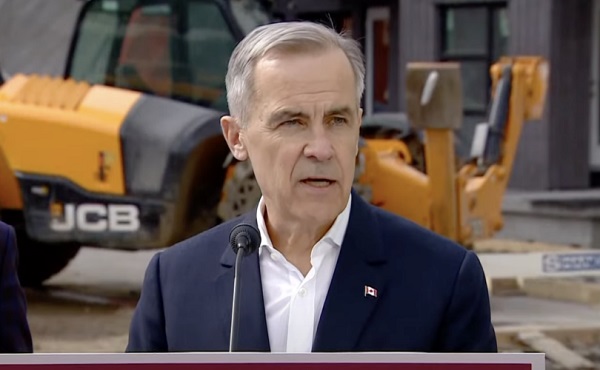Economy
Canada living standards falling behind rest of developed world

From the Fraser Institute
By Alex Whalen, Milagros Palacios, and Lawrence Schembri
On Canada Day, Deputy Prime Minister Chrystia Freeland proclaimed that “Canada is the best country in the world,” yet Canadians are getting poorer relative to their peers in many other countries and our living standards are falling. This trend is expected to continue well into the future, unless our policymakers make significant changes.
Economists often measure living standards by real gross domestic product (GDP) per person—in other words, the inflation-adjusted monetary value of what a country produces in goods and services divided by its population.
As noted in a new study published by the Fraser Institute, from 2002 to 2014, Canada’s GDP per-person growth roughly kept pace with the rest of the OECD. But from 2014 to 2022, the latest year of available comparable data, Canada’s annual average growth rate declined sharply, ranking third-lowest among 30 countries over the period. Consequently, in dollar terms, Canada’s GDP per person increased only $1,325 during this time period, compared to the OECD average increase of $5,070 (all values in 2015 U.S. dollars).
Moreover, between 2014 and 2022, Canada’s GDP per person declined from 80.4 per cent of the U.S. level to 72.3 per cent, and lost substantial ground to key allies and trading partners such as the United Kingdom, New Zealand and Australia.
And according to OECD projections, Canada will have the lowest projected average annual growth rate of GDP per person (at 0.78 per cent) from 2030 to 2060 when our GDP per person will be below the OECD average by $8,617. This represents a swing of more than $11,000 from where it was in 2002.
Why is this happening?
Several reasons, including historically weak business investment over the past decade, a substantial shift in the composition of permanent and temporary immigrants towards those with less education and fewer skills, and subdued technological innovation and adoption. These factors have combined to produce very low or negative labour productivity growth due to weak growth in the education and skills of the average worker and the amount of capital (namely plant, machinery and equipment) per worker.
While most advanced countries are experiencing similar trends, the situation in Canada is among the worst. Consequently, our relative decline in living standards grows exponentially because Canada’s poor performance compounds over time.
To break out of this rut and prevent this further decline in Canada’s living standards relative to our peers, policymakers must enact comprehensive and bold policy changes to encourage business investment and innovation, promote worker education and training, and achieve better immigration outcomes where more is not always better.
As a starting point, governments should improve the climate for business investment and for investment in education and training by streamlining regulation and major project approvals and reducing current and expected future tax burdens on firms and workers.
Levels of government debt and debt interest costs are approaching thresholds of unsustainability not seen since the 1990s. Governments, including the federal government, must exercise spending restraint to put their finances on a more sustainable path to mitigate the “crowding out” effects of government spending and debt in private markets, and thereby promote private investment. In addition, policies that liberalise intra-provincial and international trade and foster more competition, especially in key industries (e.g. transportation, communication, finance) would help boost investment, productivity and living standards.
Because GDP per person is so closely connected to incomes and living standards, Canada’s decline relative to our peer countries on this key metric should concern all Canadians. Given Canada’s projected continued poor performance, our country needs a major series of policy reforms to avoid further declines in living standards.
Authors:
Business
Americans rallying behind Trump’s tariffs
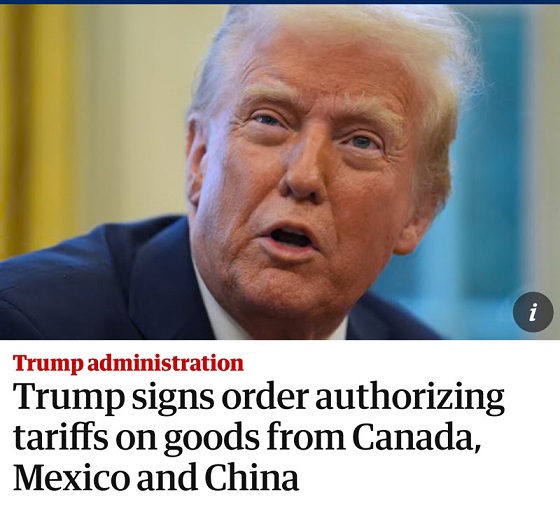
The Trump administration’s new tariffs are working:
The European Union will delay tariffs on U.S. exports into the trading bloc in response to the imposition of tariffs on European aluminum and steal, a measure announced in February by the White House as a part of an overhaul of the U.S. trade policies.
Instead of taking effect March 12, these tariffs will not apply until “mid-April”, according to a European official interviewed by The Hill.
This is not the first time the EU has responded this way to U.S. tariff measures. It happened already last time Trump was in office. One of the reasons why Brussels is so accommodative is that the European Parliament emphasized negotiations already back in February. Furthermore, as Forbes notes,
The U.S. economy is the largest in the world, and many countries rely on American consumers to buy their goods. By import tariffs, the U.S. can pressure trading partners into more favorable deals and protect domestic industries from unfair competition.
More on unfair competition in a moment. First, it is important to note that Trump did not start this trade skirmish. Please note what IndustryWeek reported back in 2018:
Trump points to U.S. auto exports to Europe, saying they are taxed at a higher rate than European exports to the United States. Here, facts do offer Trump some support: U.S. autos face duties of 10% while European cars are subject to dugies of only 2.5% in the United States.
They also noted some nuances, e.g., that the United States applies a higher tariff on light trucks, presumably to defend the most profitable vehicles rolling out of U.S. based manufacturing plants. Nevertheless, the story that most media outlets do not tell is that Europe has a history of putting tariffs on U.S. exports to a greater extent than tariffs are applied in the opposite direction.
Larson’s Political Economy is a reader-supported publication.
To receive new posts and support my work, consider becoming a free or paid subscriber.
Facts notwithstanding, this trade war has caught media attention and is reaching ridiculous proportions. According to CNBC,
Auto stocks are digesting President Donald Trump’s annoncement that he would place 25% tariffs on “all cars that are not made in the United Sates,” as well as certain automobile parts. … Shares of the “Detroit Three” all fell.
They also explain that GM took a particularly hard beating, and that Ferrari is going to use the tariffs as a reason to raise prices by ten percent. This sounds dramatic, but keep in mind that stocks fly up and down with impressive amplitude; what was lost yesterday can come back with a bonus tomorrow. As for Ferrari, a ten-percent price hike is basically meaningless since these cars are often sold in highly customized, individual negotiations before they are even produced.
Despite the media hype, these tariffs will not last the year. One reason is the retaliatory nature in President Trump’s tariffs, which—again—has already caught the attention of the Europeans and brought them to the negotiation table. We can debate whether or not his tactics are the best in order to create more fair trade terms between the United States and our trading partners, but there is no question that Trump’s methods have caught the attention of the powers that be (which include Mexico and Canada).
There is another reason why I do not see this tariffs tit-for-tat continuing for much longer. The European economy is in bad shape, especially compared to the U.S. economy. With European corporations already signaling increased direct investment in the U.S. economy, Europe is holding the short end of this stick.
But the bad news for the Europeans does not stop there. They are at an intrinsic disadvantage going into a tariffs-based trade war. The EU has a “tariff” of sorts that we do not have, namely the value-added tax, VAT. Shiphub.co has a succinct summary of how the VAT affects trade:
When importing (into the European Union), VAT should be taken into account. … VAT is calculated based on the customs value (the good’s value and transport costs … ) plus the due duty amount.
The term “duty” here, of course, refers to trade tariffs. This means that when tariffs go up, the VAT surcharge goes up as well. Aside from creating a tax-on-tax problem, this also means that the inflationary effect from U.S. imports is significantly stronger than it is on EU imports to the United States—even when tariffs are equal.
If the U.S. government wanted to, they could include the tax-on-tax effect of the VAT when assessing the effective EU tariffs on imports from the United States. This would quickly expand the tit-for-tat tariff war, with Europe at an escalating disadvantage.
For these reasons, I do not see how this “trade war” will continue beyond the summer, but even that is a pessimistic outlook.
Before I close this tariff topic and declare it a weekend, let me also mention that the use of tariffs in trade war is neither a new nor an unusual tactic. Check out this little brochure from the Directorate-General for Trade under the European Commission’:
Trade defence instruments, such as anti-dumping or anti-subsidy duties, are ways of protecting European production against international trade distortions.
What they refer to as “defence instruments” are primarily tariffs on imports. In a separate report the Directorate lists no fewer than 63 trade-war cases where the EU imposes tariffs to punish a country for unfair trade tactics.
Trade what, and what countries, you wonder? Sweet corn from Thailand, fused alumina from China, biodiesel from Argentina and Indonesia, malleable tube fittings from China and Thailand, epoxy resins from China, South Korea, Taiwan, and Thailand… and lots and lots of tableware from China.
Like most people, I would prefer a world without taxes and tariffs, and the closer we can get to zero on either of those, the better. But until we get there, we should take a deep breath in the face of the media hype and trust our president on this one.
Larson’s Political Economy is a reader-supported publication.
To receive new posts and support my work, consider becoming a free or paid subscriber.
Business
Trump Reportedly Shuts Off Flow Of Taxpayer Dollars Into World Trade Organization
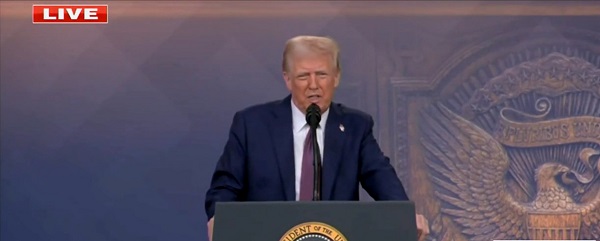

From the Daily Caller News Foundation
By Thomas English
The Trump administration has reportedly suspended financial contributions to the World Trade Organization (WTO) as of Thursday.
The decision comes as part of a broader shift by President Donald Trump to distance the U.S. from international institutions perceived to undermine American sovereignty or misallocate taxpayer dollars. U.S. funding for both 2024 and 2025 has been halted, amounting to roughly 11% of the WTO’s annual operating budget, with the organization’s total 2024 budget amounting to roughly $232 million, according to Reuters.
“Why is it that China, for decades, and with a population much bigger than ours, is paying a tiny fraction of [dollars] to The World Health Organization, The United Nations and, worst of all, The World Trade Organization, where they are considered a so-called ‘developing country’ and are therefore given massive advantages over The United States, and everyone else?” Trump wrote in May 2020.
The president has long criticized the WTO for what he sees as judicial overreach and systemic bias against the U.S. in trade disputes. Trump previously paralyzed the organization’s top appeals body in 2019 by blocking judicial appointments, rendering the WTO’s core dispute resolution mechanism largely inoperative.
But a major sticking point continues to be China’s continued classification as a “developing country” at the WTO — a designation that entitles Beijing to a host of special trade and financial privileges. Despite being the world’s second-largest economy, China receives extended compliance timelines, reduced dues and billions in World Bank loans usually reserved for poorer nations.
The Wilson Center, an international affairs-oriented think tank, previously slammed the status as an outdated loophole benefitting an economic superpower at the expense of developed democracies. The Trump administration echoed this criticism behind closed doors during WTO budget meetings in early March, according to Reuters.
The U.S. is reportedly not withdrawing from the WTO outright, but the funding freeze is likely to trigger diplomatic and economic groaning. WTO rules allow for punitive measures against non-paying member states, though the body’s weakened legal apparatus may limit enforcement capacity.
Trump has already withdrawn from the World Health Organization, slashed funds to the United Nations and signaled a potential exit from other global bodies he deems “unfair” to U.S. interests.
-
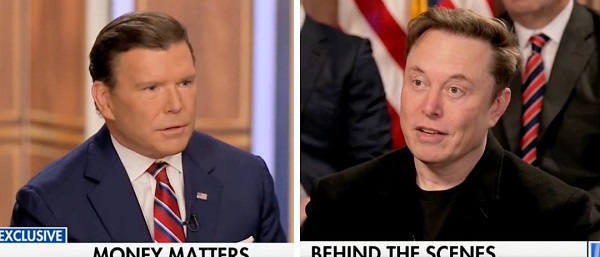
 Business23 hours ago
Business23 hours agoFeds Spent Roughly $1 Billion To Conduct Survey That Could’ve Been Done For $10,000, Musk Says
-

 2025 Federal Election1 day ago
2025 Federal Election1 day agoChinese Gangs Dominate Canada: Why Will Voters Give Liberals Another Term?
-

 Health13 hours ago
Health13 hours agoRFK Jr. Drops Stunning Vaccine Announcement
-

 Alberta11 hours ago
Alberta11 hours agoPhoto radar to be restricted to School, Playground, and Construction Zones as Alberta ends photo radar era
-

 Alberta5 hours ago
Alberta5 hours agoProvince announces plans for nine new ‘urgent care centres’ – redirecting 200,000 hospital visits
-

 Energy1 day ago
Energy1 day agoEnergy, climate, and economics — A smarter path for Canada
-
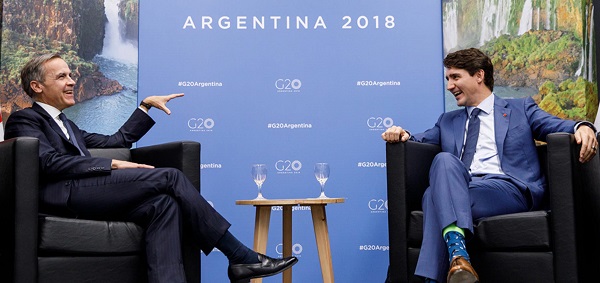
 2025 Federal Election2 days ago
2025 Federal Election2 days agoFool Me Once: The Cost of Carney–Trudeau Tax Games
-

 Business1 day ago
Business1 day agoTrump Reportedly Shuts Off Flow Of Taxpayer Dollars Into World Trade Organization









